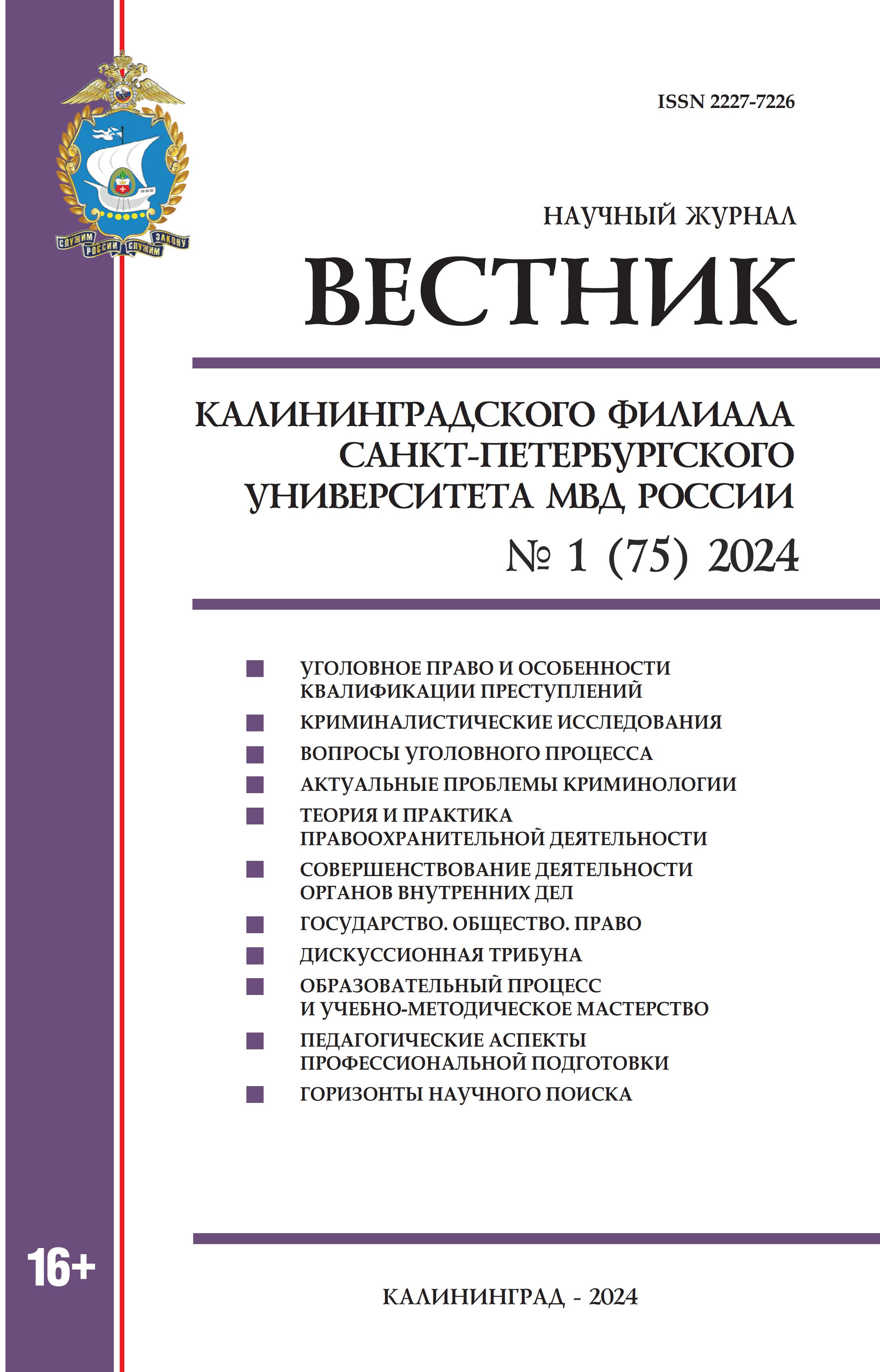V.Ya. Kikot Moscow University of the Ministry of Internal Affairs of Russia (Department of Forensic expertise of the educational and scientific complex of forensic examination, teacher)
Moscow, Russian Federation
Introduction.A full-fledged and competent inspection of the scene, as a fundamental investigative action, is the starting point for a successful investigation and disclosure of any crime. In this connection, increased requirements are imposed on the organizational and tactical work of the members of the investigative task force (ITF) aimed at detecting, fixing and removing the category of materially fixed traces in question. To date, there are quite a few sources of scientific and methodological literature, which consider in detail the possible ways of detecting, fixing and removing certain biological traces. However, there are still shortcomings in working with the group of objects under consideration, which lead to the loss of information about the persons who left them. This circumstance becomes the cause of expert errors, expressed in obtaining false information due to the facts of contamination of the original biological traces, due to improper work with them in the course of investigative actions. Methods.The presented article is the result of generalization based on the practical recommendations of various scientists in this field of work, as well as clarification based on the personal practical experience of the author, certain organizational and methodological aspects of working with objects bearing traces of human biological origin, ensuring the subsequent possibility of effective production of genetic research. Special attention is paid to the likely places of detection of materially fixed information, which should be studied during the production of individual investigative actions (inspection of the scene, search, etc.). The author substantiates and summarizes some recommendations for participants in search and cognitive actions aimed at improving the effectiveness of working with contact marks on the victim's clothing, illustrated practical examples.Results. The effectiveness of an inspection of the scene of the incident, aimed, among other things, at detecting traces of biological origin, depends on carefully selected tools and methods of working with them, the attentiveness of the members of the ITFwhen studying the places of residence of the offender before and after the commission of the crime. During the search, it is advisable to carefully inspect the clothes and shoes of the person being checked, in order to establish traces of the victim on it. Knowledge of the organizational and tactical aspects of working with traces of biological origin by members of the ITFwill ensure the possibility of their timely detection, high-quality and effective research, which will most favorably affect the completeness of the investigation of crimes.
Inspection of the crime scene, types of investigative examination, search, traces of biological origin, molecular genetic examination, DNA analysis.







